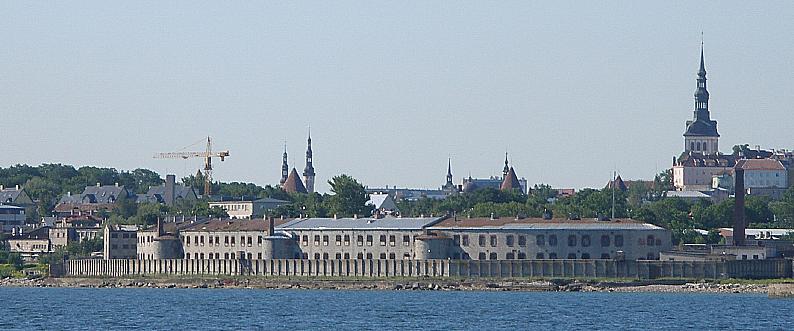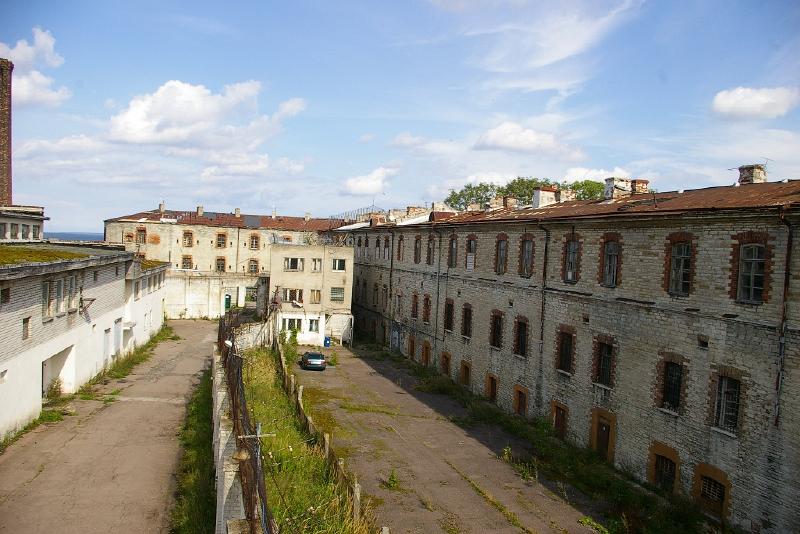Patarei Sea Fort is an ensemble of historic buildings on the coast of Tallinn, capital of Estonia. The construction started by the order of the Russian Czar Nikolai I in 1829, following the major defence plan from 1820. By 1840 the entire ensemble was completed, during the Crimean War in 1853 – 1856 the fort was rebuilt to some extent. Since its construction as a defence fort the buildings have served many different functions, reflecting the dramatic and manifold history of Estonia. From 1920 to 2002, a prison operated in Patarei during different regimes. It is a unique ensemble and the largest and most impressive classic style buildings in Estonia, significant for the entire Baltic Sea Region and Europe as a whole. Currently the buildings stand neglected and face an increasing danger of destruction
On 25 August 25 an international conference “Patarei Comes to Life!” was held in Tallinn. Presentations were made by Ambassador Jaak Jõerüüt, Mr Piet Jaspaert (Vice-President of Europa Nostra), Professor David Vseviov (Estonian Academy of Arts), Merilin Piipuu (Managing Director of the Museum of Occupations), Hellar Lill (Director of the Estonian War Museum), Professor Roode Liias (Tallinn Technical University), Jaak Saarniit (Chairman of the Management Board of Riigi Kinnisvara AS), Triin Talk (Inspector-General of Architectural Monuments of the National Heritage Board), Heikki Lahdenmäki (Restoration Director of Suomenlinna Sea Fortress) and Liis Vahter (Tallinn CityLab).
Trivimi Velliste, Honorary Chairman the Estonian Heritage Society, says that there are several possible options regarding the future of the buildings on 17,000 square metres. For example, a museum complex, a recreation and culture centre, a hotel or offices and apartments could be housed there. This magnificent ensemble will need partnership between the public and the private sector in order to come to life again.
Hellar Lill, Director of the Estonian War Museum, finds that in addition to the War Museum, Patarei could also house the Museum of Occupations, Internal Security Museum, Museum of Communist Crimes and Prison Museum – all too relevant to the history of Estonia.
Jaak Saarniit, Chairman of the Management Board of Riigi Kinnisvara AS, says that in recent years, 4 to 5 investment groups in Estonia as well as Scandinavia have expressed interest in developing the Patarei complex. Saarniit notes that the total roof area of the Patarei building complex is nearly 11,000 square metres and most of it is in critical condition.
Piet Jaspaert, Vice President of Europa Nostra spoke about Europa Nostra and its mission, and noted: “It is more than a lucky coincidence that all of you are getting together here today to brainstorm around the future of Patarei, rightly considered as being endangered, but at the same time a possible future Estonian cultural heritage flagship, next to the neighbouring Seaplane Harbour.
Yesterday I got the opportunity to visit Patarei and was thereby guided by Andrus Willem and Trivime Velliste. I have been just alike tens of young adult Estonians walking through the endless corridors, imagining what kind of life was possible behind these walls and doors, listening to the voices of the past that were crying for justice,human dignity, freedom and liberty of speech, exploring and discovering a unique testimony of Estonians vitality, history and identity.
The Estonian Heritage Society has nominated Patarei for the 7 Most Endangered programme twice: in 2013 and again in 2015.


